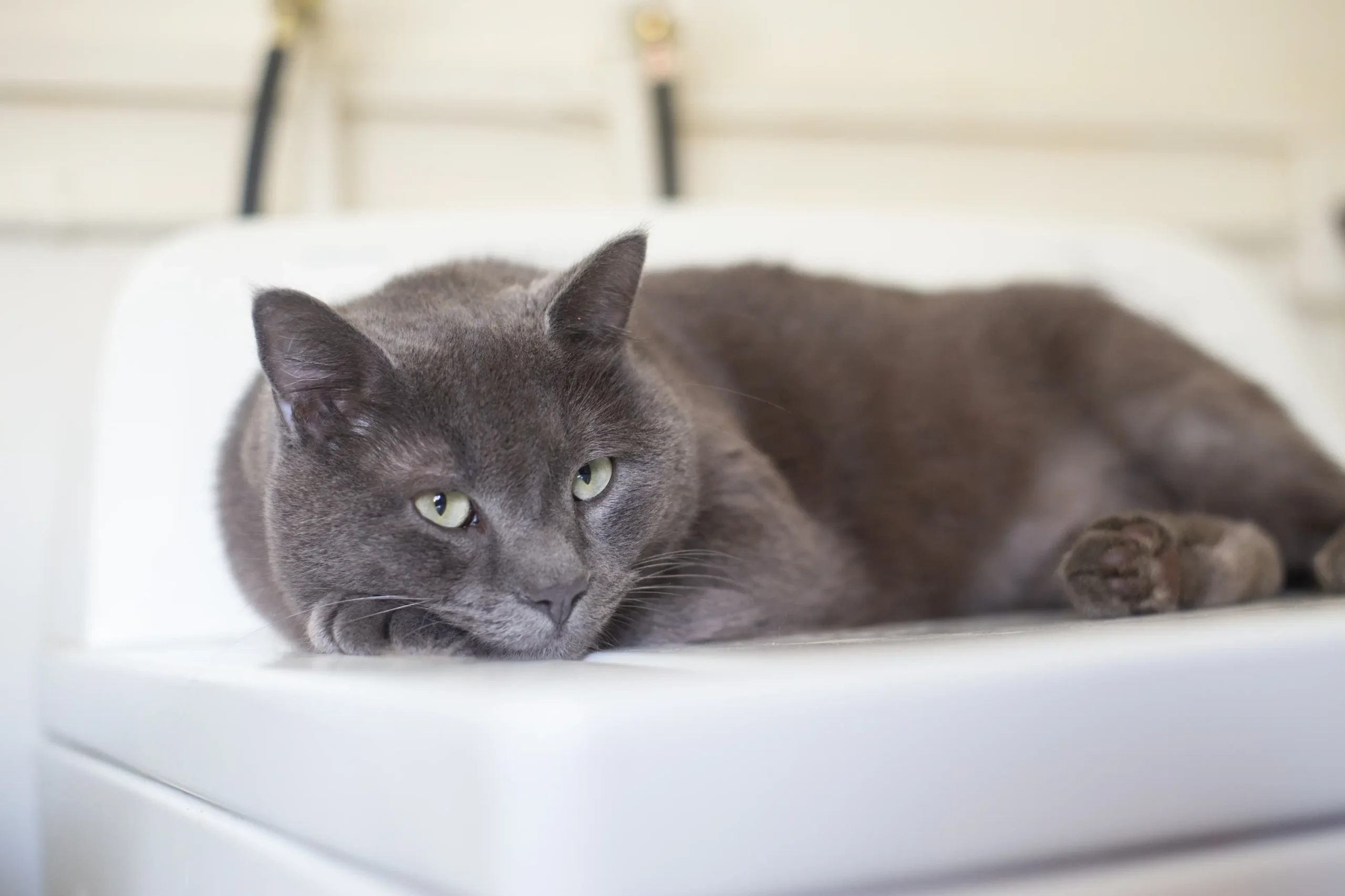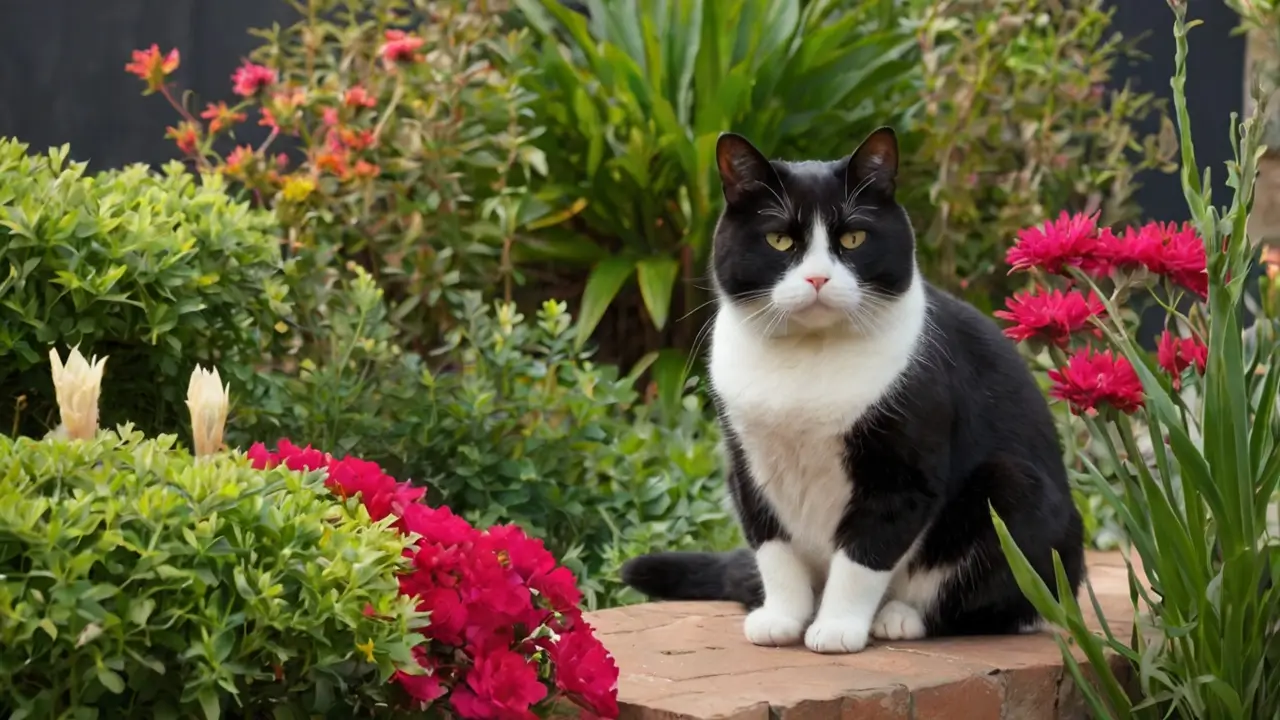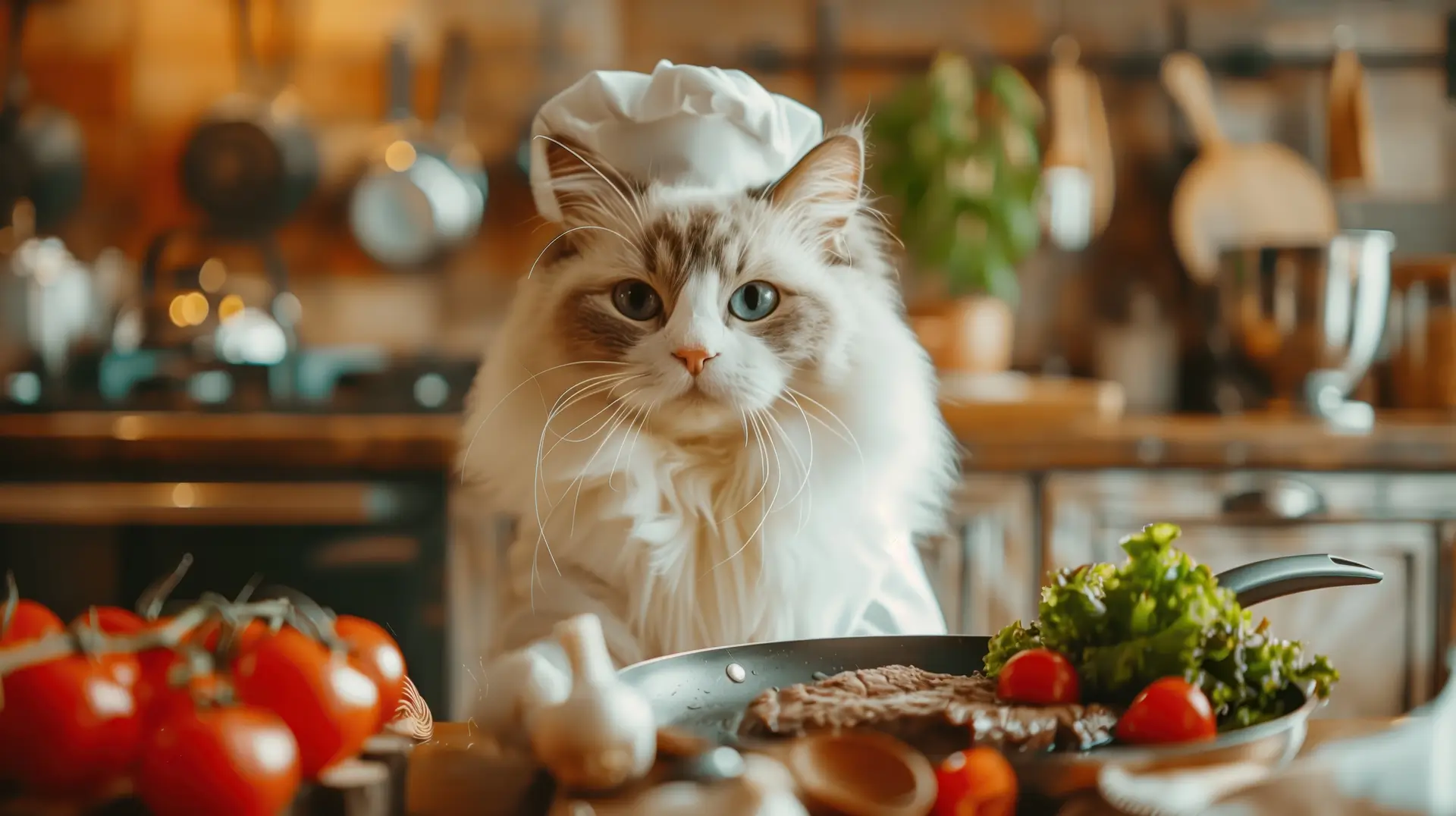People are becoming health-conscious about their pets, and this has made the best food for cats the concern of every person. Cats are special animals whose dietary requirements do not relate well to human beings and other pets, such as dogs. It is important that you give your feline friend the appropriate type of food. In aid of long, healthy, and happy lives. It is not only about taste when it comes to selecting the best cat food. It is also about having a balanced diet that is complete and meets their needs.
The most widespread question cat owners have is how they can determine the optimal food to give to their cats. There was so much to choose from: dry cat food, wet cat food, natural cat food, and the best cat food. It can be overwhelming. This is why it is basic to know cat diets.
This blog will inform you about the most suitable food cats should have and the importance of nutrition to your cat. In addition, you will also get to know about the fundamentals of cat diets and cat food. You will discover how to feed your cat properly and what the best cat food is. Also, you will learn about the healthy options of cat food, dry cat food, and wet cat food, among other things, about the best cat food. This final manual is easy to follow, and it has all the details about the cat food and diet.
Why Nutrition Matters
Cats are obligate carnivores, which means their bodies are designed to thrive on animal protein. Unlike dogs, who can digest a wider variety of foods. Cats require diets rich in meat to get essential nutrients like taurine, fatty acids, and certain vitamins. A balanced diet for cats is not optional. It is vital for survival.
When choosing the best cat foods, look for formulas that are labeled as complete and balanced by the Association of American Feed Control Officials (AAFCO). This designation means the food contains all essential nutrients in the right proportions. Whether you are looking at the best dry cat food for indoor cats or exploring the best wet cat food. The label can help you make informed decisions.
The Basics of Cat Diets
Cats require a variety of nutrients that they cannot get from plant-based sources alone. Their dietary needs include:
- High-quality protein from meat, poultry, or fish
- Essential fatty acids for coat and skin health
- Vitamins and minerals to support bone and organ function
- Water for hydration, especially important if you primarily feed dry cat food
Unlike humans, cats cannot produce some nutrients on their own. For example, taurine, an amino acid, is only found in animal protein. Without it, cats may suffer from vision loss, heart problems, or poor growth. That is why choosing the healthiest cat food involves checking the ingredients and ensuring that animal protein is listed as the first ingredient.
Types of Cat Food
There are multiple options available when it comes to feeding your feline:
- Dry Cat Food (Kibble): Convenient and cost-effective, the best dry cat food is formulated to provide energy and nutrients. Many brands now offer top cat food brands with high protein content and low fillers.
- Wet Cat Food: The best wet cat food provides higher moisture content. Which helps maintain urinary tract health. It is also highly palatable, making it a good option for picky eaters.
- Specialized Formulas: Some cats need vet recommended cat food, tailored to specific health concerns. In such cases, formulas may include grain free cat food, hypoallergenic cat food, or high-protein blends.
Each option has its pros and cons. But the ultimate goal is to provide a diet that meets your cat’s nutritional needs. Many experts recommend a combination of wet food and dry cat food to ensure balance.
Feeding Your Cat the Right Way
So, what do cats eat daily? Ideally, their diet should consist of high-protein meals with carefully balanced fats and carbohydrates. Feeding schedules matter, too. Some owners prefer free-feeding with dry cat food, while others use portioned meals of wet food.
When feeding your cat, consistency is important. Cats thrive on routine, so offering meals at the same times daily can prevent overeating. Remember, cats are obligate carnivores, and their meals must reflect that biological truth.
Another important factor is ensuring that the food you choose comes from top cat food brands known for quality. This helps guarantee that you are selecting the best cat foods that are nutritionally sound and safe.
Understanding Cat Diets and Choosing the Best Food
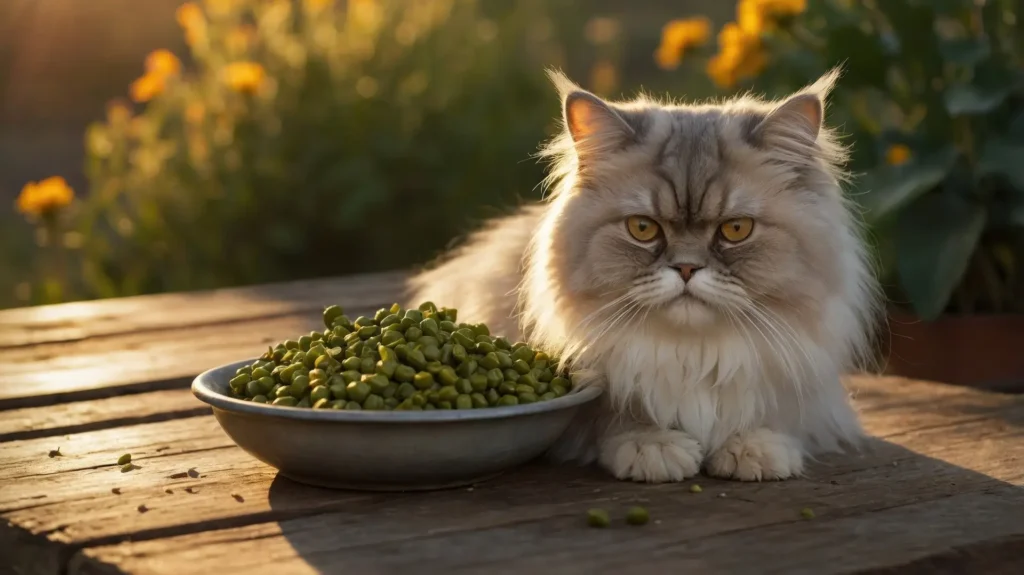
Cats are obligate carnivores, which means their bodies are designed to thrive on animal-based proteins. While wild cats rely on hunting, pet parents must carefully select the Best Food For Cats. To ensure their companions receive a complete and balanced diet. A well-planned cat diet not only promotes growth. But also prevents common health problems such as obesity, digestive issues, or nutrient deficiencies.
1. What Do Cats Eat Daily?
When people ask, “What should a cat eat daily?”, the answer often depends on age, activity level, and health condition. The best diet for cats should include:
- High protein cat food with essential amino acids.
- Healthy cat food enriched with fatty acids, vitamins, and minerals.
- Balanced diet for cats that maintains energy levels without excess calories.
Some owners wonder, “What human food can cats eat every day?”. While cats may nibble on certain safe foods for cats, such as cooked chicken, eggs, or plain rice. A diet built primarily on human foods cats can eat is not nutritionally complete. Cats require taurine, an amino acid found in animal tissues. Making commercial vet recommended cat food or carefully designed homemade cat food recipes are safer choices.
Can cats eat shrimp? Explore the query here and feed your cat to stay safe and healthy.
2. The Healthiest Food Options for Cats
Many pet parents ask, “What is the healthiest food to feed your cat?” or “What are the top 5 healthiest cat foods?”. The healthiest options depend on quality ingredients, digestibility, and life stage requirements. Here are some categories:
- Best dry cat food: Convenient, long-lasting, and helpful for dental health.
- Best wet cat food: Hydrating and often more palatable, especially for picky eaters.
- Best cat food for kittens: Formulated for growth, high in protein and calories.
- Best senior cat food: Gentle on digestion and supports joint health.
- Hypoallergenic cat food: For cats with sensitivities or allergies.
Other options include grain free cat food, organic cat food options, natural cat food, or even raw meat diets. However, when feeding raw meat, always consult a vet to ensure it meets the standards of a nutritionally complete plan.
3. Dry vs Wet Cat Food
Pet owners often debate wet vs dry cat food benefits. Both have advantages:
- Dry cat food is cost-effective, easy to store, and supports dental cleaning.
- Wet food provides moisture, reducing the risk of urinary tract issues.
The best approach is often a combination. For example, feeding primarily the best dry cat food for indoor cats while offering wet cat food as a supplement. It ensures variety and hydration.
4. What Foods Are Good for Cats?
Cats need foods that meet their biological needs. Here are some categories of what foods are good for cats:
- High-protein cat food to match their carnivorous nature.
- Premium cat food options from top cat food brands with transparent ingredient sourcing.
- Prescription cat diets for specific conditions, such as kidney issues or diabetes.
- Affordable cat food choices for families on a budget without sacrificing quality.
However, what cats should not eat is equally important. Foods like onions, garlic, chocolate, grapes, and dairy (since cats are often lactose intolerant) can be harmful.
Can cats eat Bacon? Learn about the health advantages and disadvantages of Bacon for your cat.
5. Feeding Schedules and Cat Diet Balance
Consistency is key when feeding your cat. A proper cat feeding schedule prevents overeating, begging, or digestive upsets. Pet parents often wonder:
- How many times should I feed my cat: Usually, 2 to 3 small meals daily.
- How to know if a cat is very hungry: Excessive meowing, pacing, or attempting to steal food.
- What are signs of overfeeding a cat: Weight gain, lethargy, or frequent vomiting.
The 25% rule for cat food is another guide. It means treats should not make up more than 25% of a cat’s daily calories.
6. Special Diets for Cats
Not all cats thrive on the same food. Depending on health and lifestyle, cats may benefit from:
- Cat food for sensitive stomach to ease digestion.
- Digestive health cat food enriched with prebiotics and fiber.
- Plant based supplements (limited use, since cats are carnivores).
- Homemade diets using homemade cat food recipes (with vet guidance).
For growing kittens, best food for kittens and adult cats ensures smooth transition into maturity. For older cats, best senior cat food addresses aging needs.
Do you own a special cat like Calico? Then explore the best food for calico cats here.
7. Human Foods Cats Can Eat
It’s common to ask, “What foods can cats eat?” or “What human food do cats love the most?”. Cats often enjoy plain meats such as chicken, turkey, or fish. Some cats like eggs or rice. But feeding too much human food cats can eat may unbalance their nutrition.
When thinking about which food gives cats energy. Then protein-rich meat remains the top choice. As for a cat’s favorite meat, chicken and fish rank high.
Still confused about whether can I feed my cat homemade food every day? Only if the recipe is complete and balanced with the right nutrients. Otherwise, stick to vet recommended cat food and add safe human foods as occasional treats.
8. Choosing Quality Cat Food
With so many cat food brands, it’s essential to choose wisely. Consider:
- Premium cat food options vs best budget cat food brands depending on your budget.
- Top cat food brands backed by veterinary nutritionists.
- Natural cat food free of artificial fillers.
- High quality pet foods that state “complete and balanced” on the label.
Pet parents should always look for nutritionally complete assurance from AAFCO or similar authorities.
Explore cat food fish oil to nourish your feline health because they deserve it for the charm they bring to our homes
9. Treats and Extras
Cats enjoy treats, but moderation matters. Some of the best treats for cats include freeze-dried meat or vet-approved snacks. Avoid giving them too many, as treats should complement a cat’s diet rather than replace meals.
10. The Role of Fatty Acids and Nutrients
A good diet includes more than protein. Omega-3 and Omega-6 fatty acids to support coat health. While vitamins and minerals help overall wellness. Cats also need taurine, an amino acid essential for heart and eye health.
11. Feeding Your Cat Right
Feeding your cat is more than just filling a bowl. It’s about ensuring long-term feline health and diet balance. Whether you choose grain free cat food, organic cat food options, or a balanced diet for cats from top cat food brands. Remember that cats are obligate carnivores. They need high-quality protein and nutrients to thrive.
For new pet parents, understanding what to feed cats means balancing convenience with health. With the right cat diets, portion control, and safe treats, your furry companion will enjoy a long, healthy, and active life.
Healthy Cat Food Choices: Dry vs. Wet, and Safe Foods
When choosing the right meals for your feline, the term healthy cat food often comes up. But what does it mean? The best diets for cats are those that provide a complete and balanced nutritional profile without unnecessary fillers, artificial additives, or low-quality ingredients. A nutritionally complete option will ensure that your cat gets the energy and nutrients needed for growth, activity, and long-term health.
If you own a ragdoll cat, then you must take care of their diet to stay healthy, but how? Explore the ragdoll food here
Understanding Healthy Cat Food
The healthiest cat food options usually contain high-quality animal protein, controlled fat levels, and limited carbohydrates. Many pet foods are marketed as being natural or organic. But it is important to look beyond labels. A truly natural cat food is one that avoids artificial flavors and preservatives. While focusing on real meat as the primary source of nutrition.
Some of the best cat foods now feature grain free cat food or high protein cat food formulas. Designed to mimic what cats might eat in the wild. These diets may better support muscle maintenance and energy levels. For owners seeking organic cat food options, certifications and ingredient lists should be checked carefully.
Dry vs. Wet Cat Food
Pet owners often ask: Is dry cat food or wet food better? Each has unique benefits, and the right choice often depends on your cat’s lifestyle, age, and health.
- Dry Cat Food: The best dry cat food options are convenient. They have a longer shelf life and can help with dental health. Many brands offer best dry cat food for indoor cats. That supports weight control and activity levels.
- Wet Food: The best wet cat food provides moisture. This is important for cats who may not drink enough water. The wet vs dry cat food benefits debate shows that wet food often helps reduce urinary tract issues and supports hydration.
Safe and Unsafe Foods for Cats
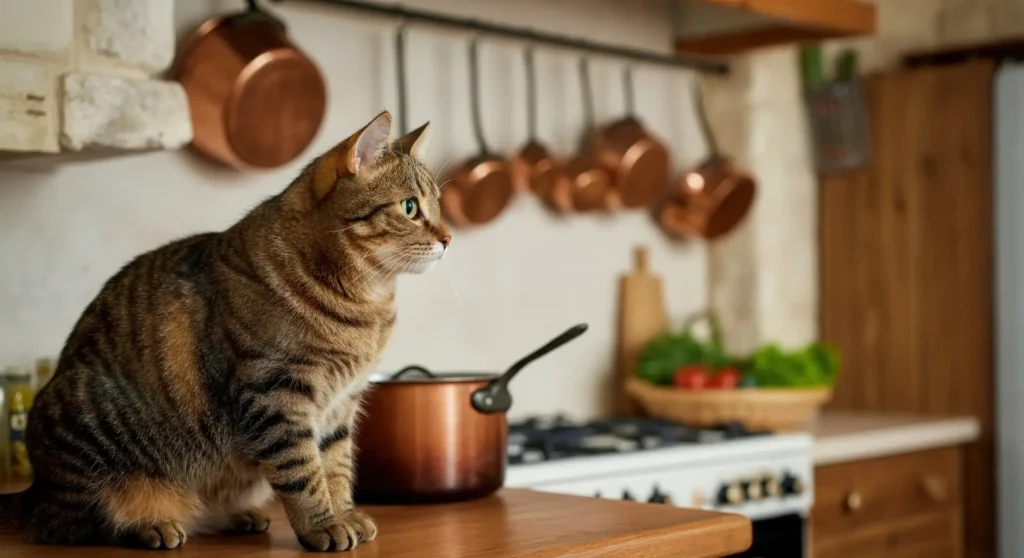
One of the most common questions is: what human food can cats eat everyday? While cats are obligate carnivores, they can enjoy small amounts of certain human foods as treats. Safe choices include cooked chicken, turkey, or fish, as well as small amounts of vegetables like peas or pumpkin. These human foods cats can eat provide variety, but should not replace regular meals.
It’s also useful to know what foods are good for cats beyond traditional cat food. For instance, some human food cats can eat include plain eggs or a small portion of cheese (though not all cats tolerate dairy). These safe foods for cats can be offered in moderation.
However, not all human foods are appropriate. Owners must know what cats should not eat. Toxic foods include onions, garlic, chocolate, caffeine, grapes, and alcohol. Even though many pet parents enjoy sharing meals with their cats, it’s important to remember that some items are unsafe.
So, what foods can cats eat daily? The safest answer is nutritionally formulated cat diets. Human foods should be considered supplements, not staples.
Choosing the Best for Everyday Feeding
With so many choices available, how can you tell which are the best cat foods for your feline? Reading labels carefully is essential. Look for indicators like:
- Named animal protein as the first ingredient
- Added taurine for heart and vision health
- Clear mention of being complete and balanced
- Options for specific needs, such as cat food for sensitive stomach
It is also helpful to ask your vet about vet recommended cat food. Particularly, if your cat has allergies, digestive issues, or other health concerns.
Ultimately, feeding healthy cat food means combining nutritional science with your cat’s preferences. Every cat is unique, and finding the best food for cats may involve some trial and error.
Life Stage Diets and Special Health Needs
Cats have different dietary requirements at various stages of life. What a kitten needs is very different from what a senior cat requires. Choosing the best food for cats kittens, adults, or seniors ensures they receive the right balance of nutrients at each phase.
Feeding Kittens
Kittens need more protein, fat, and calories than adults to fuel growth and energy. The best kitten food is specifically designed to support developing muscles, bones, and immune systems. These formulas often contain higher levels of DHA and other fatty acids for brain development. Some brands even offer the best food for kittens and adult cats, which can simplify feeding in multi-cat households.
It’s important to avoid feeding only adult food to kittens, as it may not meet their nutritional demands. A nutritionally complete formula for kittens is essential.
Feeding Adult Cats
For adult cats, the goal is maintenance. Many top cat food brands offer balanced formulas tailored for adult cats, whether they live indoors or outdoors. Indoor cats, for example, may benefit from the best dry cat food for indoor cats, which focuses on weight control and digestion.
This is also the stage where cats might develop food sensitivities or require cat food for sensitive stomach. For such cases, switching to digestive health cat food or even hypoallergenic cat food may be recommended.
Feeding Senior Cats
Senior cats often need softer textures and easily digestible meals. The best senior cat food includes lower calories to prevent obesity but still provides essential nutrients. Protein remains crucial to maintain muscle mass, while added vitamins support joint and immune health.
For seniors with health issues, a vet-recommended cat food can make a significant difference. Prescription diets can address problems like kidney disease, diabetes, or obesity. These prescription cat diets are carefully formulated under veterinary guidance.
Special Health Needs and Dietary Options
Not every cat thrives on the same diet. Some require adjustments due to allergies, intolerances, or chronic conditions. Options include:
- Hypoallergenic cat food: Designed for cats with food allergies or sensitivities.
- Cat food for sensitive stomach: Gentle on digestion, often featuring limited ingredients.
- Digestive health cat food: Includes prebiotics and probiotics to support gut function.
- High protein cat food: Ideal for active or underweight cats who need extra calories.
In addition to these, organic cat food options and premium cat food options are available for owners who prefer high-quality ingredients. Some affordable cat food choices also meet nutritional standards, making it easier for every owner to find something suitable.
For picky eaters or households with multiple cats, experimenting with different best cat foods may be necessary. The goal is always to ensure the food is nutritionally complete and supports overall feline health and diet.
Is tuna fish cat food good and healthy for your feline’s health? Discover here
Budget-Friendly vs Premium Choices
Price often influences what cat owners buy, but cost doesn’t always equal quality. While premium cat food options often feature organic meats or exotic ingredients, some of the best budget cat food brands still provide balanced nutrition.
Owners looking for affordable cat food choices can compare ingredients and nutritional guarantees to find the right match. It’s possible to maintain a balanced diet for cats without overspending.
That said, in cases of medical needs, investing in prescription cat diets or vet-recommended cat food is worth the cost. These diets are specifically designed for health conditions and cannot be replaced by generic alternatives.
What about feeding honey to a cat? Is it good or bad? Let’s explore can cats eat honey
Best Food for Cats: Feeding Guideline
Here is a detailed feeding guideline for the best food for cats:
1. Feeding Guidelines for Cats
Establishing a proper cat feeding schedule is just as important as choosing the best diet for cats. Overfeeding can lead to obesity. While underfeeding may cause nutrient deficiencies. Generally, adult cats should be fed twice a day, while kittens may need more frequent meals.
Cats are obligate carnivores, so their meals should be rich in protein. A balanced diet for cats must include high-quality meat, essential fatty acids, vitamins, and minerals. Whether you choose wet food, dry cat food, or a combination, ensure it is complete and balanced.
For treats, choose carefully. The best treats for cats are those that complement a regular diet rather than replace it. Avoid feeding high-calorie human snacks, as many are not safe.
2. Understanding Cat Preferences
Every cat has unique tastes. Some prefer kibble, while others love wet food. Others may enjoy a mixture. Knowing what do cats eat happily can help you create a consistent routine.
Cats also show interest in human foods, but owners should understand what can cats eat safely. While some human foods cats can eat include plain meats or eggs, many items are harmful.
Always remember that cats can eat certain treats, but they still require specially formulated food. Their cat’s diet should never rely solely on table scraps.
The Bengal cat is a loving creature. If you own one, explore Bengal food here for this loving creature’s health
3. Special Considerations
- Raw meat: Some owners feed raw diets, but safety and balance are concerns. If not done correctly, raw feeding may lack essential nutrients.
- Plant based: Cats cannot thrive on fully plant-based diets due to missing nutrients like taurine.
- Homemade diets: Some owners prepare homemade cat food recipes. While rewarding, these require veterinary input to ensure meals are nutritionally complete.
Other points:
- Many cats are lactose intolerant, so avoid giving milk.
- Wild cats in nature rely solely on animal prey, which is why domestic cats also need meat-heavy diets.
- Always opt for high-quality brands when choosing food.
Popular Queries About the Best Food for Cats
- What is the 25 rule for cat food?
This rule refers to labeling standards: if a product is called “Chicken Cat Food,” chicken must make up at least 25% of the content.
- What is a cat’s most favorite food?
Many cats prefer high-protein cat food or moist foods like tuna, chicken, and the best wet cat food options.
- How to make homemade food for cats?
Owners can try homemade cat food recipes. But consult a vet to ensure they are nutritionally complete.
- How to know if a cat is very hungry?
Excessive meowing, pacing, or stealing food can be signs. Adjusting meals within your cat feeding schedule helps.
- How many times should I feed my cat?
Adult cats generally eat twice daily, while kittens require more frequent feeding of the best kitten food.
- What human food do cats love the most?
Common human food cats can eat include plain chicken, turkey, or fish.
- Can I feed my cat homemade food every day?
Yes, but only if recipes are nutritionally complete. Otherwise, stick to top cat food brands.
- Which food gives cats energy?
High-protein cat food and the best cat foods with animal protein provide energy.
- What is a cat’s favourite meat?
Many cats enjoy chicken, fish, or beef, which are also found in the best cat food brands.
Conclusion
Feeding your cat properly is about more than filling a bowl. It’s about choosing the best food for Cats brands and ensuring a complete and balanced diet. Also, being mindful of what to feed cats at each life stage.
Whether you opt for premium cat food options, affordable cat food choices, or homemade diets. The priority is always your cat’s long-term well-being. Remember, cats are obligate carnivores, and their nutrition must reflect that.
By focusing on feline health and diet, using vet-recommended cat food when necessary. Try to know what cats should not eat. You can ensure your pet lives a healthy, happy life.
FAQs
1. What is the healthiest food to feed your cat?
The healthiest food for cats is one that is rich in protein, low in fillers, and labeled complete and balanced.
2. What should a cat eat daily?
Cats should eat meals that provide animal protein and essential nutrients. The best cat food or vet-recommended cat food ensures proper health.
3. What kind of diet is best for a cat?
A balanced diet for cats includes protein, fats, vitamins, and minerals. The best cat foods combine these elements.
4. What is a natural diet for cats?
A natural cat food diet mimics what wild cats would eat. It is mostly meat, with limited carbohydrates.
5. What are signs of overfeeding a cat?
Weight gain, lethargy, and difficulty jumping are clear signs. Following a structured cat feeding schedule can help with it.


